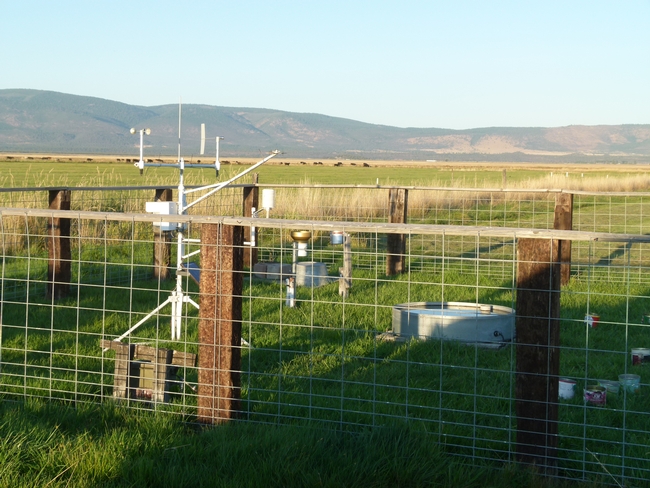Recently I was asked why an irrigation schedule could be projected for almond and citrus in the Central Valley (Almonds:http://cekern.ucanr.edu/Irrigation_Management/Almond_Drip_-_Microsprinkler_-
_Flood_Weekly_ET/Citrus: http://cekern.ucanr.edu/Irrigation_Management/Citrus_ET_by_age/ ) and why the same couldn't be done for the main avocado growing areas. Here was my response:
Generating a generic irrigation schedule for avocados along the coast is very difficult and if done would be terribly misleading. Scheduling gets really hairy along the coast where avocados are grown. As you get further from the coast the water demand (ETo) increases in many months, typically increasing in the summer. This can be most pronounced in the late winter/spring when the fog along the coast really causes a contrast between coastal and inland conditions. May in Ventura, the sun comes out for about 2 hours and in Fillmore 20 miles inland it may be 90 F at 4 PM. The fog is a major determinant for irrigation demand and it varies daily, monthly and year to year from Monterey to San Diego. So fog can throw off an irrigation schedule.
The next variable to area-wide scheduling is the topography where avocados are grown, usually slopes to improve air and water drainage. Depending on the aspect and slope position, the ETo can vary tremendously depending on the sky conditions and what those conditions are depending on the time of day (such as foggy in the morning and clear in the afternoon). So west and south facing will always be higher than north and east. The top of the slope that intercepts more wind than the bottom and will have higher ETo than the bottom of the slope. And if the trees intercept more evaporative conditions midday when the sun comes out, it will be much higher than the east side in the morning when fog is dripping off the trees (zero evaporative demand). Then as you go south from Monterey to San Diego the ETo goes up, just because of latitude and sun interception. These conditions are very different from Fresno where ETo in July is 0.6 inches per day and is the same until Sept, the sky is clear most days and trees are grown on fairly flat ground.
Now throw in rainfall. Almonds are deciduous and only count on the value of rainfall as that which is stored in the rooting zone going into spring when leaves are come out. Avocados rely on winter rain for transpiration and salt leaching. In a good year a significant portion of the total yearly ETcrop can be subtracted from the irrigation demand. In a low/no rainfall year that all needs to be made up by supplemental irrigation.
An almond grower in the Valley might be able to go onto a calendar, set the clock if they have water on demand and walk away. That's never going to happen in a coastal avocado orchard. Depending on where the avocado is grown and the ETo at that site, applied water might vary from 1.5 ac-ft per acre to 3.5. This will depend on rainfall (when and how much), water quality (which determines leaching requirement) and the system delivery (system efficiency). This system issue can be further complicated by whether the delivery is on-demand or whether a certain amount will be delivered at a certain date for a certain length of time - 24 hours or 48. This makes it difficult for the grower to put on exactly what ETo and other issues the trees would demand. In this case, the delivery system determines the schedule.
So this is why there's no chart showing ET demand for coastal avocados where the bulk are grown in California.
A CIMIS (CA Irrigation Management Information System) DWR weather station for calculating crop water requirement.
Attached Images:
